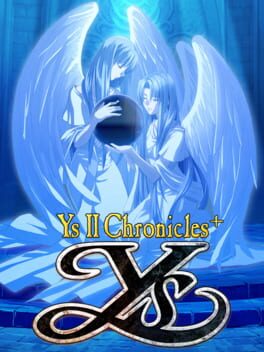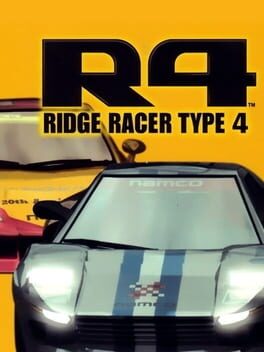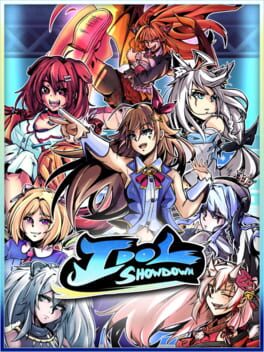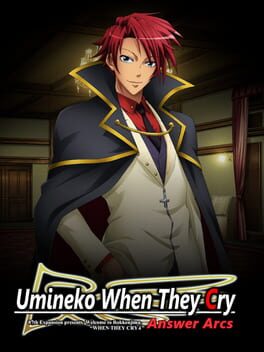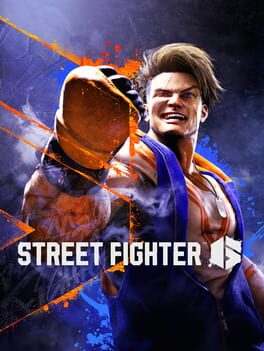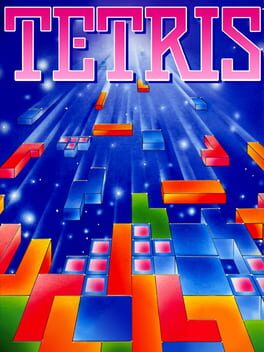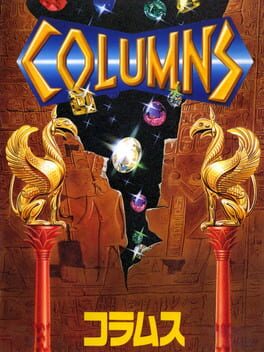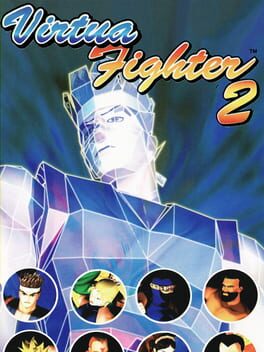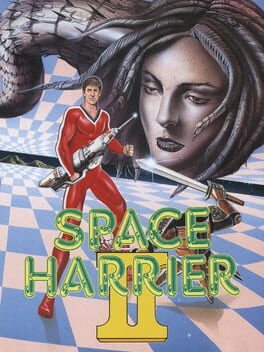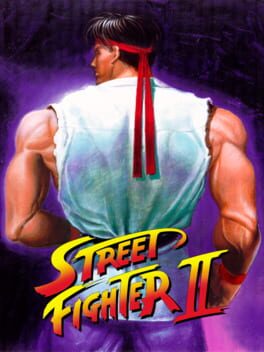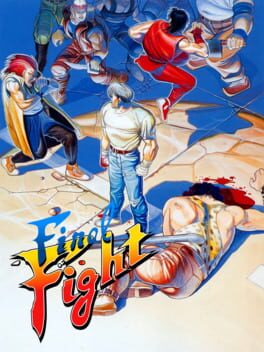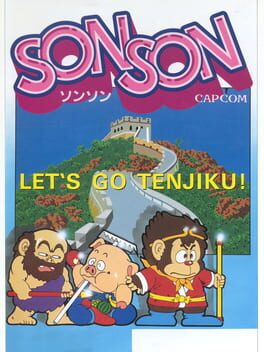VideoGameTim
BACKER
2023
I had high expectations going into Final Fantasy XVI. The producer, composer, and (one of) the writers from Final Fantasy XIV, along with a combat director from Devil May Cry 5, as well as help from Platinum Games and the Kingdom Hearts combat team sounded like the recipe for an incredible experience. I am happy to say FFXVI delivers on all accounts.
Regarding the narrative, Clive Rosfield makes for an excellent protagonist. Throughout the course of the game we see him grow up and experience a lot of the harsh realities of his world. In a lot of ways, mainly due to his gravely voice and blunt personality, he reminds me of Geralt of Rivia. His wolf companion Torgal also has many opportunities to shine both in and out of combat, and you really get attached to him as the game goes on.
In general, I could actually go on about a lot of the supporting cast. Even minor characters get a ton of great development through the side quests, which are all fully voiced and either serve as meaningful world building, or just tell interesting stories. Admittedly, no small number of them are fetch quest-style, however the payoffs are usually worth it.
The overall plot is a wild ride from start to finish. Many heavy themes are tackled and are handled appropriately, and it's a really grim picture that gets painted. As you journey around Valisthea, the story spends a considerable amount of time building up to these big Eikon fights, multiple of which I consider to be among my favourite boss fights of all time. They are that good. The overall pacing is handled well, speeding up and building to these big battles and then giving the player time to breathe afterwards. It never really feels to fast or too slow. That being said, the game will typically throw side quests at you during the downtime, so obsessive players (like myself) who feel compelled to do them and will find the pacing slow down considerably as a result.
When it comes to the combat, it really is Devil May Cry 5 Lite. The Eikon forms you unlock over the course of the game serve as your styles that you can cycle through during combat (3 equipped at a time), and each has a certain gimmick they are centered around. I thought I would stick with the first 3 you get for most of the game, however my end game loadout was pretty different because they all do feel different and fun to use. Initially, I found the common fodder enemies to be too easy to blast through with your Eikon abilities, however mini-bosses and regular bosses are plentiful. Eventually I began to feel that it served as a good contrast to remind me how powerful Clive is. I think if they were too hardy, it would really make the game feel like a chore.
The open-world is also more of an open-world lite. You have a handful of FFXIV-sized zones dotted with fast travel points, and there isn't much in terms of exploration outside of looking for Hunts and fullfilling side quests. This isn't a bad thing, in fact it's a nice balance between being a linear game and still giving you open vistas to run around in without experiencing open world fatigue.
Overall, FFXVI really is one of the best. A powerful, well-written story with some heavy themes, a cast of characters that I got attached to (even the shopkeeper and the blacksmith!), a stellar soundtrack as always from Soken, and some really crazy combat. They really nailed the whole package, and once I have had a bit of a reprieve I will certainly go back and try all the cool things I unlocked for beating it.
Regarding the narrative, Clive Rosfield makes for an excellent protagonist. Throughout the course of the game we see him grow up and experience a lot of the harsh realities of his world. In a lot of ways, mainly due to his gravely voice and blunt personality, he reminds me of Geralt of Rivia. His wolf companion Torgal also has many opportunities to shine both in and out of combat, and you really get attached to him as the game goes on.
In general, I could actually go on about a lot of the supporting cast. Even minor characters get a ton of great development through the side quests, which are all fully voiced and either serve as meaningful world building, or just tell interesting stories. Admittedly, no small number of them are fetch quest-style, however the payoffs are usually worth it.
The overall plot is a wild ride from start to finish. Many heavy themes are tackled and are handled appropriately, and it's a really grim picture that gets painted. As you journey around Valisthea, the story spends a considerable amount of time building up to these big Eikon fights, multiple of which I consider to be among my favourite boss fights of all time. They are that good. The overall pacing is handled well, speeding up and building to these big battles and then giving the player time to breathe afterwards. It never really feels to fast or too slow. That being said, the game will typically throw side quests at you during the downtime, so obsessive players (like myself) who feel compelled to do them and will find the pacing slow down considerably as a result.
When it comes to the combat, it really is Devil May Cry 5 Lite. The Eikon forms you unlock over the course of the game serve as your styles that you can cycle through during combat (3 equipped at a time), and each has a certain gimmick they are centered around. I thought I would stick with the first 3 you get for most of the game, however my end game loadout was pretty different because they all do feel different and fun to use. Initially, I found the common fodder enemies to be too easy to blast through with your Eikon abilities, however mini-bosses and regular bosses are plentiful. Eventually I began to feel that it served as a good contrast to remind me how powerful Clive is. I think if they were too hardy, it would really make the game feel like a chore.
The open-world is also more of an open-world lite. You have a handful of FFXIV-sized zones dotted with fast travel points, and there isn't much in terms of exploration outside of looking for Hunts and fullfilling side quests. This isn't a bad thing, in fact it's a nice balance between being a linear game and still giving you open vistas to run around in without experiencing open world fatigue.
Overall, FFXVI really is one of the best. A powerful, well-written story with some heavy themes, a cast of characters that I got attached to (even the shopkeeper and the blacksmith!), a stellar soundtrack as always from Soken, and some really crazy combat. They really nailed the whole package, and once I have had a bit of a reprieve I will certainly go back and try all the cool things I unlocked for beating it.
2013
A direct sequel to Ys I, Ys II immediately picks up where the first game ended. This time around, Adol has access to various forms of magic which are your main way of fighting most of the bosses.
Overall, the structure of the game is very similar to the first - you explore long, winding dungeons with brief moments spent in towns along your journey. The difference in this game is that the dungeons are MUCH longer and more maze-like, and you spend a lot less time in the towns comparatively. This isn't strictly a bad thing, what actually knocks the game down a bit for me is the pacing/build-up. Ys I is a very solid structure with a gradual build-up to the epic, climactic final dungeon. Ys II feels a bit more plodding, and the final dungeon has a bizarrely (yet still pretty good) chill theme that doesn't really convey the stakes well. It might seem like a minor complaint, but it's pretty important to get that right if you want to build up to a big finale.
Overall, I still really enjoyed the whole experience and the ending even if it didn't quite live up to the first game. I am excited to continue the series from here in the future!
Overall, the structure of the game is very similar to the first - you explore long, winding dungeons with brief moments spent in towns along your journey. The difference in this game is that the dungeons are MUCH longer and more maze-like, and you spend a lot less time in the towns comparatively. This isn't strictly a bad thing, what actually knocks the game down a bit for me is the pacing/build-up. Ys I is a very solid structure with a gradual build-up to the epic, climactic final dungeon. Ys II feels a bit more plodding, and the final dungeon has a bizarrely (yet still pretty good) chill theme that doesn't really convey the stakes well. It might seem like a minor complaint, but it's pretty important to get that right if you want to build up to a big finale.
Overall, I still really enjoyed the whole experience and the ending even if it didn't quite live up to the first game. I am excited to continue the series from here in the future!
1998
A very solid arcade racing game for the PS1 that still looks pretty damn good. Great soundtrack, and even a little bit of a story for the different teams you can join in Grand Prix mode that seemingly adapts to your performance. As an example, in the second heat I got first place and then second place, and afterwards the manager commented on how "it wasn't as good as last time" which was a very neat detail.
Only reason I am docking a star here is because while the tracks themselves are pretty challenging, the fight is actually more with the ridiculous turning that the cars do so it's hard to focus on good apex's. Still, definitely a blast regardless of that.
Only reason I am docking a star here is because while the tracks themselves are pretty challenging, the fight is actually more with the ridiculous turning that the cars do so it's hard to focus on good apex's. Still, definitely a blast regardless of that.
2023
Genuinely a pretty well put together fighting game considering it is a free fan project. There's the usual training, versus, and arcade, and online modes, as well as a Virtual Frontier mode which is reminiscent of BlazBlue's Abyss Mode. You fight different characters with different modifiers as your health bar carries over between matches, and look for places to rest or acquire new items to help you along the way. It's pretty unforgiving and definitely the main draw of the game for me.
There's currently 8 characters to choose from with a number of assists and they all have a unique style. The big detractor here for me is that movement/animations don't feel amazing and it overall ends up feeling a little wonky. Still, I cannot deny the effort that was put into it and I hope the developers continue to work on and improve it!
There's currently 8 characters to choose from with a number of assists and they all have a unique style. The big detractor here for me is that movement/animations don't feel amazing and it overall ends up feeling a little wonky. Still, I cannot deny the effort that was put into it and I hope the developers continue to work on and improve it!
The tale of the 1000-year old witch. A stunningly woven story featuring a great cast of characters and a mystery that keeps you thinking. There are a number of themes that really came across strongly here, but I certainly believe it would be better for those interested to take this journey and reason them out for themselves. It is not a short endeavor by any stretch of the imagination - my overall play time combining both Question and Answer Arcs summed up to be just shy of 130 hours but I can assure you every moment was well worth it.
Like Question Arcs, Answer Arcs undoubtedly has its moments where the pacing slows down, however this time around I was significantly more enthralled with the plot points to really feel like it was a detractor. It is a roller coaster ride from start to finish and wrapped up as well as I had hoped, but I still believe Chapter 5 to be my favourite overall.
I did not imagine that I would have made more handwritten notes for a VN this year than I did for Tears of the Kingdom - and I started far, far too late. For fans of the mystery genre, you absolutely owe it to yourself to read this to completion. I genuinely hope more people continue to do so as I have, and I can think of no more fitting game to mark as my 1000th played game tracked on this website.
Like Question Arcs, Answer Arcs undoubtedly has its moments where the pacing slows down, however this time around I was significantly more enthralled with the plot points to really feel like it was a detractor. It is a roller coaster ride from start to finish and wrapped up as well as I had hoped, but I still believe Chapter 5 to be my favourite overall.
I did not imagine that I would have made more handwritten notes for a VN this year than I did for Tears of the Kingdom - and I started far, far too late. For fans of the mystery genre, you absolutely owe it to yourself to read this to completion. I genuinely hope more people continue to do so as I have, and I can think of no more fitting game to mark as my 1000th played game tracked on this website.
2023
I never really got into Street Fighter; 2 and 3 were well before I really got interested in fighting games, and I really did not care for the visual style of 4 and 5. However, between World Tour, the crazy character creator, and overall just general aesthetic of the game I felt like this was finally the one I wanted to jump in with.
First and foremost, the story in World Tour mode is by no means great. The plot is fairly cut and dry, your created character is on a journey to find out WHAT IS STRENGTH and meet the cast of the actual fighters along the way. As you meet each new "master", you can change your normal moveset to match theirs, and as you rank up the style/develop your social link with them, you can learn more of their specials and supers as well. Running around the world itself feels almost like a Yakuza game where random goons will run up and start STREET FIGHTS with you, and how easily you can kick their ass depends on how close you are to them in level. Beyond that, there's also a clothing/equipment system to upgrade your stats (and a glamour setting you unlock fairly early to ensure you can separate your desired look from your best stat gear), as well as a selection of fun minigames that teach you some fundamentals like motion inputs, charge inputs, and parrying. The highlight really is being able to give gifts to the masters, rank up your bond and style with them, and even their text messages to you get pretty entertaining. They even made it so maxing out their bond unlocks the second costume for each character in online/versus modes. It took me about 25 hours to beat while I was scraping all the side quests I could, so the content is certainly there and it's one of the most impressive story modes I've seen for a 2D fighter.
Another big driving factor behind my SF6 rating here is the option for Modern controls. Admittedly, as a gamepad/anime fighting game player, I really never thought 6 button fighters felt good. The modern control options reduce your available buttons down from 6 to 4 and trade a higher selection of normals and higher damage for some easier inputs. It certainly makes the game more accessible for less hardcore fighting game fans, and it makes trying out new characters a lot more fun.
Beyond that, there is the standard fighting game fare. A battle hub where you can run around with your highly detailed (or highly monstrous) created character and sit down at arcade cabinets for unranked matches, a selection of built in Capcom classic arcade games that rotate in and out, the traditional arcade and training modes, tutorials, character, guides, everything you can think of. The menu-ing is a LITTLE bit too cumbersome, but most things you need to change are easy to set and forget.
SF6 really does have it all. Good netcode, lots of content, and is just in general really fun to pick up and play. I really hope Capcom does a good job supporting it, because I could see this being one I stick with for awhile.
First and foremost, the story in World Tour mode is by no means great. The plot is fairly cut and dry, your created character is on a journey to find out WHAT IS STRENGTH and meet the cast of the actual fighters along the way. As you meet each new "master", you can change your normal moveset to match theirs, and as you rank up the style/develop your social link with them, you can learn more of their specials and supers as well. Running around the world itself feels almost like a Yakuza game where random goons will run up and start STREET FIGHTS with you, and how easily you can kick their ass depends on how close you are to them in level. Beyond that, there's also a clothing/equipment system to upgrade your stats (and a glamour setting you unlock fairly early to ensure you can separate your desired look from your best stat gear), as well as a selection of fun minigames that teach you some fundamentals like motion inputs, charge inputs, and parrying. The highlight really is being able to give gifts to the masters, rank up your bond and style with them, and even their text messages to you get pretty entertaining. They even made it so maxing out their bond unlocks the second costume for each character in online/versus modes. It took me about 25 hours to beat while I was scraping all the side quests I could, so the content is certainly there and it's one of the most impressive story modes I've seen for a 2D fighter.
Another big driving factor behind my SF6 rating here is the option for Modern controls. Admittedly, as a gamepad/anime fighting game player, I really never thought 6 button fighters felt good. The modern control options reduce your available buttons down from 6 to 4 and trade a higher selection of normals and higher damage for some easier inputs. It certainly makes the game more accessible for less hardcore fighting game fans, and it makes trying out new characters a lot more fun.
Beyond that, there is the standard fighting game fare. A battle hub where you can run around with your highly detailed (or highly monstrous) created character and sit down at arcade cabinets for unranked matches, a selection of built in Capcom classic arcade games that rotate in and out, the traditional arcade and training modes, tutorials, character, guides, everything you can think of. The menu-ing is a LITTLE bit too cumbersome, but most things you need to change are easy to set and forget.
SF6 really does have it all. Good netcode, lots of content, and is just in general really fun to pick up and play. I really hope Capcom does a good job supporting it, because I could see this being one I stick with for awhile.
1989
1990
1996
1988
1991
1989
1984
Breath of the Wild never did really blow me away. I certainly enjoyed it, and it's approach to open-world exploration was well executed - even if the rewards for doing missed the mark. I did not grow up with the series, and I initially wasn't even going to pick up Tears of the Kingdom until the very final launch trailer pushed me to just enough interest - and man am I glad I did.
As a direct sequel to BotW, TotK set out to improve upon every single aspect of its predecessor in every conceivable way, and I will do my best to break down each one of those things with as little spoilers as possible.
First off, the absolute biggest factor for me here was the exploration and more specifically, the Depths. An entire unmapped underground section that matches the size of Hyrule that is shrouded in darkness. As you explore it, you will find light-roots that not only serve to light up the surrounding area, but fill in the map as well. You better believe I got every last one for the satisfaction of filling in my map completely. There's a lot of great rewards, creepy monsters, and fun encounters to be had down there as well so it's absolutely worth dedicating time to.
Similarly, a handful of sky islands were also added flying above the surface. While their total surface area would probably make up around ~10% of the game map, there's a lot of cool things to be found up there as well. For the main world, there are certainly some new changes since BotW, however I admit the 6 years since the game's release has helped it feel fresh in my own mind.
One other thing they did to really spice up exploration is via the Fuse ability I mentioned earlier. Fuse allows you to stick anything you want onto your melee weapon, your shield, or your next arrow. If you want to attach a silver Lynel horn to your weapon to ramp up the damage, or a spring to your shield to bounce enemies who attack you away, or Keese wings to your arrow to make it fly further, these are all new possibilities. This is REALLY important because it fixes one of the biggest exploration problems I had with BotW. Due to weapon durability, it very quickly never felt worth it attacking monster camps because your reward was inevitably just a new weapon to replace what you probably just broke. But now, killing the monsters is just as much of a reward because their parts aren't relegated to just cooking elixirs - they improve your weapons too.
Another big factor for me is the shrines, and by extension your new powers that can be used to solve them. Shrines were present in the first game, but you didn't really have very interesting abilities that you could use to solve them outside of stasis. In TotK, your Ultra Hand, Recall, and to a lesser extent Fuse and Ascend are an excellent set of tools to solve them. Outside of the handful of combat-focused shrines (which usually have more creative solutions in mind), the variety of puzzles is incredible and make use of the great physics engine in the game. The Ultrahand ability also lets you make all manner of crazy contraptions from vehicles to robots to traps. It's not too cumbersome, especially when it comes to recreating past contraptions being very streamlined.
The final key aspect I want to touch on here is the story. If you remember the BotW story, you'll have to remind me because there wasn't too much interesting going on (and a lot of it was obscured in easily missable cutscenes). TotK's plot is a massive leap forward in quality. There is a lot of mystery to it, and while there are collectible "memory cutscenes" here too, they are very easy to find and tell a pretty interesting tale that features a couple of wild ideas. Most of the boss fights also end up being pretty fun (save for one), and a final boss that I could see comfortably sitting among my all time favourites.
Now all that is to say, it is by no means without flaws. My biggest gripe is the sort function missing an alphabetical sort which makes sifting through your materials often difficult if you are looking for something specific. The other main gripe I have would be that this is a late-generation Switch game so performance struggles at times. Still, despite these flaws it is absolutely a game worth experiencing, I'd dare say even worth skipping BotW for if you haven't played it.
I could probably continue to go on about how much I enjoyed Tears of the Kingdom, but I will probably leave it here. Never could I imagine I would be nearly doubling my playtime from BotW just finishing the main story and obsessively exploring the world, and I'll likely do a bit more of that before I am truly done. At the time of writing this, I am not sure if FFXVI, Trails into Reverie, or Alan Wake 2 are going to sweep GOTY 2023 away from TotK for me - but they are going to have to REALLY work for it.
As a direct sequel to BotW, TotK set out to improve upon every single aspect of its predecessor in every conceivable way, and I will do my best to break down each one of those things with as little spoilers as possible.
First off, the absolute biggest factor for me here was the exploration and more specifically, the Depths. An entire unmapped underground section that matches the size of Hyrule that is shrouded in darkness. As you explore it, you will find light-roots that not only serve to light up the surrounding area, but fill in the map as well. You better believe I got every last one for the satisfaction of filling in my map completely. There's a lot of great rewards, creepy monsters, and fun encounters to be had down there as well so it's absolutely worth dedicating time to.
Similarly, a handful of sky islands were also added flying above the surface. While their total surface area would probably make up around ~10% of the game map, there's a lot of cool things to be found up there as well. For the main world, there are certainly some new changes since BotW, however I admit the 6 years since the game's release has helped it feel fresh in my own mind.
One other thing they did to really spice up exploration is via the Fuse ability I mentioned earlier. Fuse allows you to stick anything you want onto your melee weapon, your shield, or your next arrow. If you want to attach a silver Lynel horn to your weapon to ramp up the damage, or a spring to your shield to bounce enemies who attack you away, or Keese wings to your arrow to make it fly further, these are all new possibilities. This is REALLY important because it fixes one of the biggest exploration problems I had with BotW. Due to weapon durability, it very quickly never felt worth it attacking monster camps because your reward was inevitably just a new weapon to replace what you probably just broke. But now, killing the monsters is just as much of a reward because their parts aren't relegated to just cooking elixirs - they improve your weapons too.
Another big factor for me is the shrines, and by extension your new powers that can be used to solve them. Shrines were present in the first game, but you didn't really have very interesting abilities that you could use to solve them outside of stasis. In TotK, your Ultra Hand, Recall, and to a lesser extent Fuse and Ascend are an excellent set of tools to solve them. Outside of the handful of combat-focused shrines (which usually have more creative solutions in mind), the variety of puzzles is incredible and make use of the great physics engine in the game. The Ultrahand ability also lets you make all manner of crazy contraptions from vehicles to robots to traps. It's not too cumbersome, especially when it comes to recreating past contraptions being very streamlined.
The final key aspect I want to touch on here is the story. If you remember the BotW story, you'll have to remind me because there wasn't too much interesting going on (and a lot of it was obscured in easily missable cutscenes). TotK's plot is a massive leap forward in quality. There is a lot of mystery to it, and while there are collectible "memory cutscenes" here too, they are very easy to find and tell a pretty interesting tale that features a couple of wild ideas. Most of the boss fights also end up being pretty fun (save for one), and a final boss that I could see comfortably sitting among my all time favourites.
Now all that is to say, it is by no means without flaws. My biggest gripe is the sort function missing an alphabetical sort which makes sifting through your materials often difficult if you are looking for something specific. The other main gripe I have would be that this is a late-generation Switch game so performance struggles at times. Still, despite these flaws it is absolutely a game worth experiencing, I'd dare say even worth skipping BotW for if you haven't played it.
I could probably continue to go on about how much I enjoyed Tears of the Kingdom, but I will probably leave it here. Never could I imagine I would be nearly doubling my playtime from BotW just finishing the main story and obsessively exploring the world, and I'll likely do a bit more of that before I am truly done. At the time of writing this, I am not sure if FFXVI, Trails into Reverie, or Alan Wake 2 are going to sweep GOTY 2023 away from TotK for me - but they are going to have to REALLY work for it.
Having played the original 2018 release, there isn't actually a ton of new things to say about Connected. The main additional draw is the multiplayer modes, which are all very unique and satisfying to play. Tetris Effect remains one of the best entries in the long running series, and I am glad we have this updated, definitive version (that also has crossplay!).

